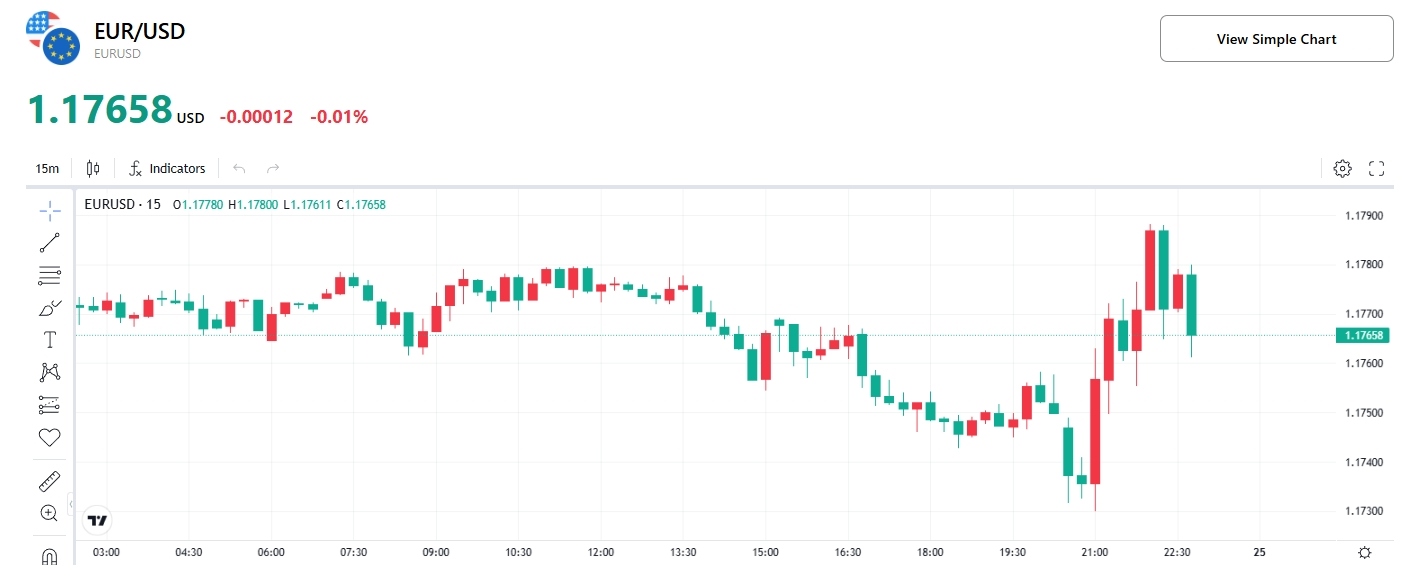Inflation Target Achieved, Rate Hikes Back on the Table? ECB Pauses Rate Cuts in July, Unfazed by Euro Strength
TradingKey - After eight consecutive rate cuts, the European Central Bank (ECB) has hit the pause button on its easing cycle — marking a potential turning point, as inflation reaches target and the eurozone economy shows resilience, despite ongoing U.S.-EU trade tensions.
On Thursday, July 24, the ECB announced it would hold key interest rates steady, in line with market expectations. The current rates remain:
- Deposit Facility Rate: 2.00%
- Main Refinancing Rate: 2.15%
- Marginal Lending Facility Rate: 2.40%

ECB Deposit Facility Rate, Source: TradingKey
Inflation Back on Target
The ECB confirmed that inflation has now reached its 2% medium-term target, with the eurozone CPI rising 2.0% YoY in June, up from 1.9% in May. The decision to hold rates was unanimously approved by the Council.
In her post-meeting press conference, ECB President Christine Lagarde said the central bank is now in a good place, as inflation forecasts indicate a sustained return to target over the medium term.
She said that while wage growth remains elevated, it has recently slowed — and is moving in the right direction at a pace that supports a stable disinflation process.
Risks Remain — But So Does Resilience
Lagarde acknowledged that trade tensions, particularly around U.S.-EU tariff negotiations, could still lead to higher market volatility and risk-off sentiment, potentially weighing on domestic demand.
However, she emphasized that the eurozone economy has shown resilience, with stronger consumption and investment supporting growth. Recent surveys point to modest economic expansion ahead.
A Pivotal Moment: Is the End of Easing Near?
Notably, Lagarde highlighted that the banking system is still awash with liquidity, and the ECB could begin considering tightening policy again — a rare signal that rate hikes are now back on the table.
Following the decision, markets quickly adjusted their expectations:
- Probability of a September rate cut dropped from 40% to 28%
- Odds of a December cut fell from over 90% to around 70%
The EUR/USD pair erased earlier losses of 0.3% , stabilizing at 1.17658, with little net change on the day.

EUR/USD Exchange Rate, Source: TradingKey
The ECB’s Dovish Pause?
Despite the pause, the ECB did not rule out a final rate cut later this year, especially if trade uncertainty resurfaces.
Mark Wall, Chief European Economist at Deutsche Bank, commented
“Markets are not far away from switching focus from the last cut to the first hike.Uncertainty remains high and the ECB rightly wants to keep its options open.”
He added that if trade tensions ease, the combination of economic resilience and large-scale fiscal stimulus across the EU could eventually reignite inflationary pressures.
U.S.-EU trade negotiations remain in a delicate phase. On July 23, Financial Times reported that a deal on a 15% tariff rate was near — only for U.S. officials to dismiss it as speculation. On July 24, EU member states voted to approve a €93 billion retaliatory package against U.S. goods — set to automatically take effect on August 7 if no agreement is reached.
Lagarde made no significant remarks on the euro’s strength — suggesting the ECB is not alarmed by EUR/USD’s 14% rise in 2025.
While the strong euro aligns with her vision of a “Euro Moment” — greater global use of the currency — it has raised concerns about export competitiveness.
ING strategists noted that Lagarde’s tone leaves room to doubt whether the ECB will cut rates again at all.
Bloomberg reported that the ECB’s silence on the exchange rate signals it is comfortable with the current trend — especially as de-dollarization and reserve flows continue to support structural demand for the euro.
Jason Tang, Senior Economist at TradingKey, expects that global de-dollarization will remain a core driver in foreign exchange markets, keeping downward pressure on the DXY and providing intermittent support for the euro — offering upside potential for EUR/USD bulls in the near term.



